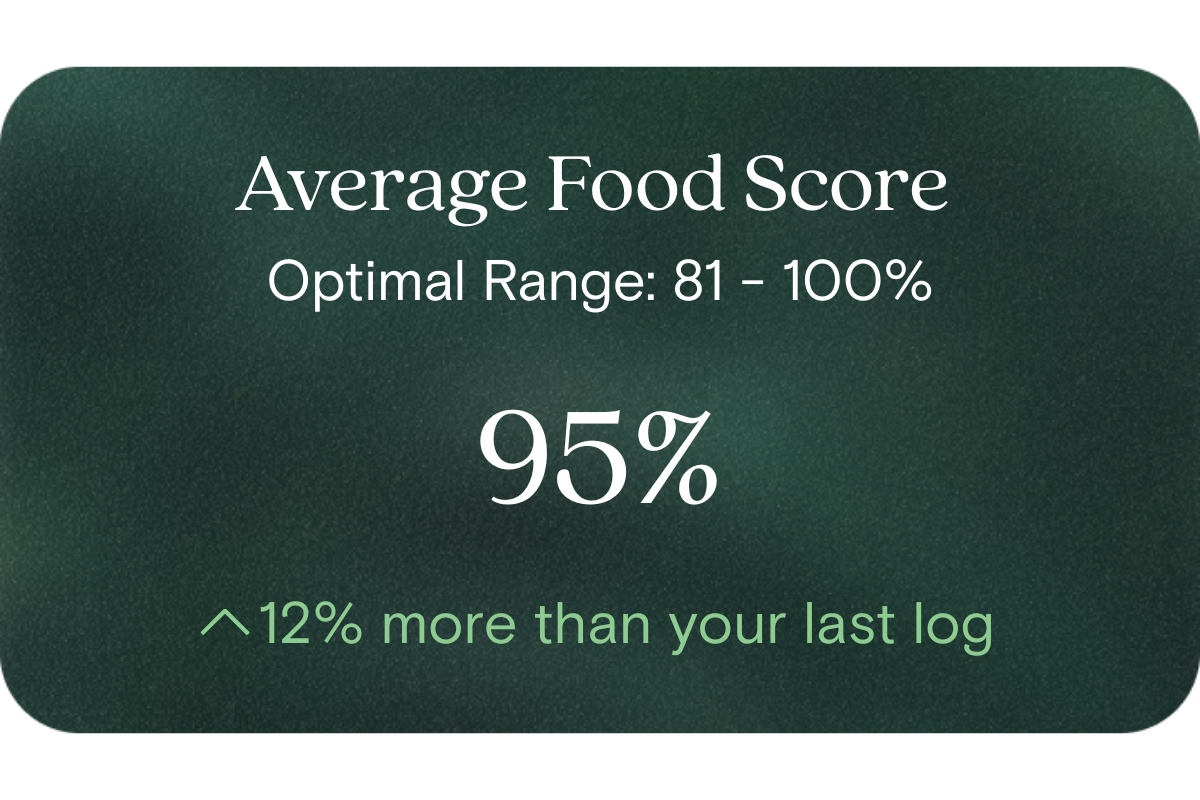What is Avg Food Score?
Avg Food Score is a summarised percentage measure (%) of your habitual diet quality: it combines data about your intake of key nutrients, whole foods vs processed foods, fibre, diversity and balance, and expresses it on a 0–100 % scale.
Why does it matter for long-term health and wellbeing?
Your diet drives the fuel, building blocks and repair signals your body receives. A stronger Avg Food Score indicates better nutrient sufficiency, favourable metabolic signalling, lower nutritional stress, and greater capacity for sustained energy, recovery and adaptation over years.
What’s an optimal level of Avg Food Score?
Optimal (healthy target): ~ 81–100 %
Typical lab reference ranges, expressed in Australian units (%):
- 20 % = 0–20 %
- 40 % = 21–40 %
- 60 % = 41–60 %
- 80 % = 61–80 %
- 100 % = 81–100 %
Thus, being in the 80–100 % zone (i.e. 81–100 %) is considered optimal for health and wellbeing in our model.
What influences Avg Food Score levels?
Factors include: dietary composition (plants, whole grains, lean proteins, healthy fats), fibre and phytochemical intake, proportion of ultra-processed foods, nutrient density, meal diversity and balance, consistency of good choices, and seasonal or lifestyle variations (e.g. travel, social eating).
What does it mean if Avg Food Score is outside the optimal range?
- Below ~80 %: you have room to improve — it suggests gaps or imbalances in nutrient intake, over-reliance on processed foods, or insufficient variety.
- Far below (e.g. < 60 %): this signals greater opportunity for positive shifts — you may see more benefit from targeted dietary refinement, and your metabolism or energy balance may respond more when adjusting.
Importantly, being outside optimal does not imply illness; it simply highlights an opportunity for beneficial change.
How can I support healthy Avg Food Score levels?
- Emphasise whole, minimally processed foods (vegetables, legumes, whole grains, nuts, seeds)
- Limit ultra-processed products and refined sugars
- Increase dietary variety across food groups and colours
- Prioritise fibre, micronutrient-dense foods, and balanced macros
- Plan meals, reduce food monotony, and use feedback cycles (track, adjust, test again)
- Stay consistent: even small positive shifts sustained over time raise your average
This information is provided for general health and wellness purposes only and does not replace medical advice.
References
- Liang, S., et al. (2022). Biomarkers of dietary patterns: a systematic review. PMC.
- McNamara, A. E., et al. (2021). The Potential of Multi-Biomarker Panels in Nutrition Research. Frontiers in Nutrition.
- Abar, L., Steele, E. M., Lee, S. K., et al. (2025). Identification and Validation of Poly-Metabolite Scores for Diets High in Ultra-Processed Food. PLOS Medicine.




















.png)
